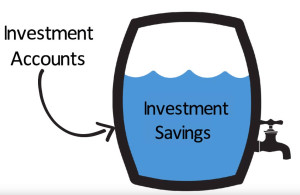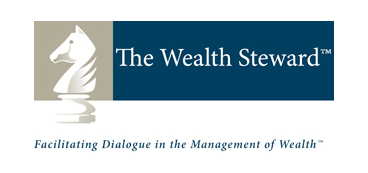By Dan Hallett on November 27, 2015
 In the world of investing, nothing turns my stomach more than when a member of the investment industry misleads investors and then directly benefits from said misinformation. Usually only subtle trickery is at play. And most often I have seen this in the form of funds sporting unsustainable cash payouts – which I’ve been studying and writing about since 2001.
In the world of investing, nothing turns my stomach more than when a member of the investment industry misleads investors and then directly benefits from said misinformation. Usually only subtle trickery is at play. And most often I have seen this in the form of funds sporting unsustainable cash payouts – which I’ve been studying and writing about since 2001.
A ‘High-payout’ Portfolio
An investor recently asked me to give feedback on her portfolio. She has seven figures invested in a bunch of high-payout monthly income funds. On a $1 million investment, this portfolio currently pays distributions of $4,446 monthly – equal to about 5.6% annually net of fees.
Some of the funds pay reasonable and sustainable distributions. But others don’t. I highlighted three concerns:
High Fees, Excessive Distributions, and an Aggressive Asset Mix
At 2.4% annually, fees are at least 70 basis points higher than she should pay for a seven figure portfolio – the typical minimum of licensed discretionary portfolio managers. And since all of it is embedded – instead of charged directly to their account – the after tax cost compared to a more suitable fee is even higher.
Distributions are unsustainably high. I found that this portfolio’s current payout rate is more than 25% higher than the level I estimate is sustainable. This is important given that she relies on the monthly cash payouts to pay for living expenses. But in a world of skinny yields, nobody likes hearing that their cash flowing machine is a mirage.
Finally her nearly 75% allocation to stocks is too aggressive based on my assessment of her willingness and capacity to take on investment risk.
Industry Spin puts Advisor Interests Ahead of Investors
To the distribution sustainability concern, the investor received rather disheartening responses directly from the fund companies with which she’s invested. Responses have been edited to conceal the identity of the companies and for clarity.
The first is from a big bank fund company:
Basically, if a fund grows quickly, and the fund has a fixed distribution per unit, then we will pay out more income than the fund is earning while this happens. We characterize this as RoC [Return of Capital], which is beneficial to all clients (recent purchasers and previous owners).
This defines RoC distributions – i.e. cash payouts that are in excess of actual income and realized capital gains. But it doesn’t address whether the funds in question can sustain their current payouts. Interestingly, it implies a link between sustainability and how much new money is being invested. That’s only relevant in a Ponzi scheme – which these funds are not – or with respect to the payout mechanics but not sustainability.
The second response – focused on one fund – is from a smaller fund company:
Return of capital is a very tax efficient method of generating monthly cash flow. Two things on ROC – most of the yield has been earned and the overall return of the fund over ten years is approximately 8%. However instead of paying out the growth as capital gains and pushing tax every year, we paid out return of capital.
If the client is using the cash flow then there is a deferred capital gain for the client. If however they’re reinvesting the distribution, the ACB should be similar or even higher. If they’re are drawing income the benefit is enjoying the income today and deferring the gain to a future date where the client can then take some out as capital gains.
This response is either deceitful or sloppy. The firm’s own website lists the fund’s 10-year total return at 6.3% per year through October 31 – not 8% as claimed. Big difference since the distribution has averaged just south of 8% annually – and currently equates to 8.5% annually.
$100,000 invested in this fund on October 31, 2005 would have resulted in about $69,000 in total cash distributions by October 31, 2015. The original $100,000, however, would have fallen to about $82,400 had all of the distributions been taken in cash. In other words, the fund paid out so much in cash that it reduced original capital by almost 18%. It did not produce a high-enough return to fully support its cash payouts – contrary to what the firm told our investor; the person to which it owes a fiduciary duty.
Also a fund cannot choose the tax identity of its cash distributions – as the above explanation implies. Funds with investments that pay dividends, interest – and that trigger gains from selling investments at a profit – have taxable income that must be paid out to investors. If fund companies could choose, they’d all pay distributions that attracted no immediate income taxes. A fund can choose, however, to distribute an amount of cash that exceeds its taxable income – the excess being RoC.
People trust the investment industry with their life savings. Yet these fund company responses are aimed at protecting themselves at the expense of the long-term sustainability of their client’s investment assets from which they derive revenue. This sort of conduct has persisted for too long and it needs to change.
And it’s why neither of the above companies manages money for HighView clients and why we do not use products with payout policies designed for asset gathering by appealing to investor psychology rather than for long-term sustainability.
Below, see our latest video on distribution sustainability:
HighView Financial Group is an investment counselling firm for affluent families and foundations. We build portfolios based on each client’s unique goals and tolerance for risk. Schedule a complimentary discovery session to see if we’re the right investment stewardship counsellors for you.
You may also be interested in:
- SPIVA Report Interesting but Misses Key Message for Investors
- Mystery Shoppers Reveal Challenges of Comparing Investment Advisor Fees in Ontario
- Getting Value from the Investment Management Fees You Pay
- Do Covered Call Strategies Shine In “Flat Markets”? - June 26, 2025
- Piling into U.S. stocks? Don’t Expect the Past Decade to Repeat - January 15, 2025
- The S&P 500’s Three Surprising Traits - November 6, 2024



